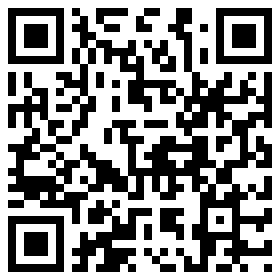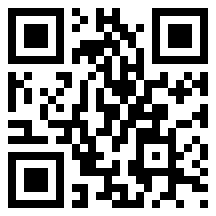
What is the Shape of this Problem?
~ Louise Bourgeois (1999)
Imagine a door or window. A passport or online password. An icecap or sea trench. A painting or song or dance.
Shape implies proportion and dimension, form and contour. Problems puzzle, like a riddle or difficulty seeks to be solved.
This is one point.
Two points make a line.
Line by line, poems are measured.
This is (not) a poem rather a problem: the shape of accessibility. A changing shape in a changing world.
To access accessibility harks back to Middle French (meaning “that can be reached or entered, available, obtainable”), rooted less in access than accede, as in approach, accept or agree to, draw near, resort to, join, assent to, accrue, attain a dignity, perform or fulfill.
What does it mean to perform (in)accessibility?
“There exists still another force which develops not within the point, but outside of it,” writes Wassily Kandinsky (1926), “and a new being arises out of it which leads a new, independent life in accordance with its own laws. This is the Line.”
End of Preview. To access full text, please login or become a Subscriber.
Another point, another line:
In The Analysis of Beauty (1753), William Hogarth claims that beauty arises from serpentine lines. To which William Hay responds in Deformity: “Since I finished this Essay, I am in Doubt whether I ought not to change the Title. For I have heard of a very ingenious Performance, called The Analysis of Beauty, which proves incontestably, that it consists in Curve Lines.”
Is the shape of this problem Curved?
A. Refer to history of “Deformity.”
B. Refer also to “(de)Form.”
C. Refer also to “(mis/over/under)Representation.”
A metaphor for .
Sentences feign legibility and linearity, reverberating as an echo chamber, an architecture of acoustics, using the pretext of prose.
Poetics of space inhabit architectures like houses, nests and shells, according to Gaston Bachelard (1964).
I am (not) the point. You are (not) the point.
Another point, planted among planets: our round little house called Earth.
(in)accessible echoes across poetics to politics, libraries to technologies, Universal Design across the Web across a wider world of shifting shapes, ramping access to clean water, food, shelter, education, human rights.
A metaphor for .
Nothing exists in a vacuum, not even a vacuum.
Amid other etymological branches of accede, active and arcane, lie hints of “burning.”
What heats up the heart of this shape? Can this problem boil down to a molten mass underfoot, the heat of this living planet?
If you are (not) the point, and I am (not) the point, then:
If, then: together we can (not) make a line. We can make a line in or from this essay or poem or whatever you want to call this shape, this problem, part of a web, unraveling and spun from what appears bound as a book.
Note: For instructions on “How To Make This Book More (In)Accessible”: see Galerie de Difformité (2011), page 221.
Time and space affect our relationship with points and lines and beyond, as we grope into shifting shapes, probing this problem, which isn’t static or defined, or even singular. Is this a problem or a possibility?
“After it had been notified to me that the said doctrine was contrary to the Books of the Accessible Poets,” writes Charles Bernstein (2008), “I persisted.”
Two more points: a timeline.
Something is burning. Something is melting. Not everything boils down to an equation. Points and lines are more than conceptual.
“When a disabled body moves into a social space,” writes Tobin Siebers (2004), “the lack of fit exposes the shape of the normative body for which the space was originally designed.”
Accessibility shifts inter/sections/actions. X approaches A. door, B. computer, C. poem-fiction-essay-crossing-the-line at D. with another checkpoint at E. and can/not access A, B, C, D, E. X becomes confounded, discouraged, inspired, hurt, moved, (fill in the blank). X is moved to confront what fits and what doesn’t. X is moved to think: What is the point? Another point? Can I draw a line?
According to John Muir (1911), “When we try to pick out anything by itself, we find it hitched to everything else in the universe.”
R. Buckminster Fuller wrote (1970), “Everything you’ve learned in school as ‘obvious’ becomes less and less obvious as you begin to study the universe. For example, there are no solids in the universe. There’s not even a suggestion of a solid. There are no absolute continuums. There are no surfaces. There are no straight lines.”
A metaphor for .
X wants to understand A, B, C, D, E. And more. X senses limits and knows she can/not exist as a point because so many other points are at stake. X wants to connect more dots. X wants to make new lines, to try to understand the shape of this problem. X wants to move beyond lines.
(Listen:)
“If the sound is in ‘M’ and the listener in ‘N,’ the sound will be believed to be in ‘S’ if the court is enclosed at least on 3 sides against the listener,” according to Leonardo da Vinci (1452-1519).1
Can our writings set up atmospheres and acoustics to interpret, more than linear or literal readings, re-sounding? What is the shape of this problem?
ABCDE
FGHIJ
KLMNOP
QRSTUV
WXYZ
Better to leave you not with one point, but many. You can draw whatever lines.
WORKS CITED
“accessible” and “accede.” OED Online. March 2013. Oxford UP. 5 June 2013. Web.
Bachelard, Gaston. Poetics of Space. Trans. Maria Jolas. New York: Orion, 1964. Print.
Bernstein, Charles. “Recantorium.” Attack of the Difficult Poems: Essays and Inventions. Chicago: U of Chicago P, 2011. 279. Print.
Flake, Gary William. The Computational Beauty of Nature: Computer Explorations of Fractals, Chaos, Complex Systems, and Adaptation. Cambridge: MIT P, 1998. 129. Print.
Hay, William. Deformity: An Essay. London: Dodsley, 1754. 82. Print.
Henderson, Gretchen E. Galerie de Difformité. Chicago: Lake Forest College P, 2011. 221. Print.
Kandinsky, Wassily. Point and Line to Plane. Trans. Hilla Rebay. Mineola, NY: Dover, 1979. 54. Print.
Muir, John. My First Summer in the Sierra. Boston: Houghton, 1998. 157. Print.
Siebers, Tobin. “Disability as Masquerade.” Literature and Medicine 23.1 (Spring 2004): 8. Print.
von Rotenhan, Christina. “Louise Bourgeois: Between the Lines.” Art in Print 2.6 (Spring 2013): 18. Print.
Winternitz, Emanuel, ed. Leonardo da Vinci as a Musician. New Haven: Yale UP, 1982. 117. Print.
NOTES
1Analogy may be made with the Galerie de Difformité: if a sound is made in one Exhibit while Gentle Reader resides in another, she may seek out additional Exhibits to coordinate orchestrations. For a contemporary point of access, which in future years will become inaccessible, scan the QR (Quick Response) codes at this essay’s beginning and end to investigate “What is a Page?” and “How to Read?”
Return to Reference.
